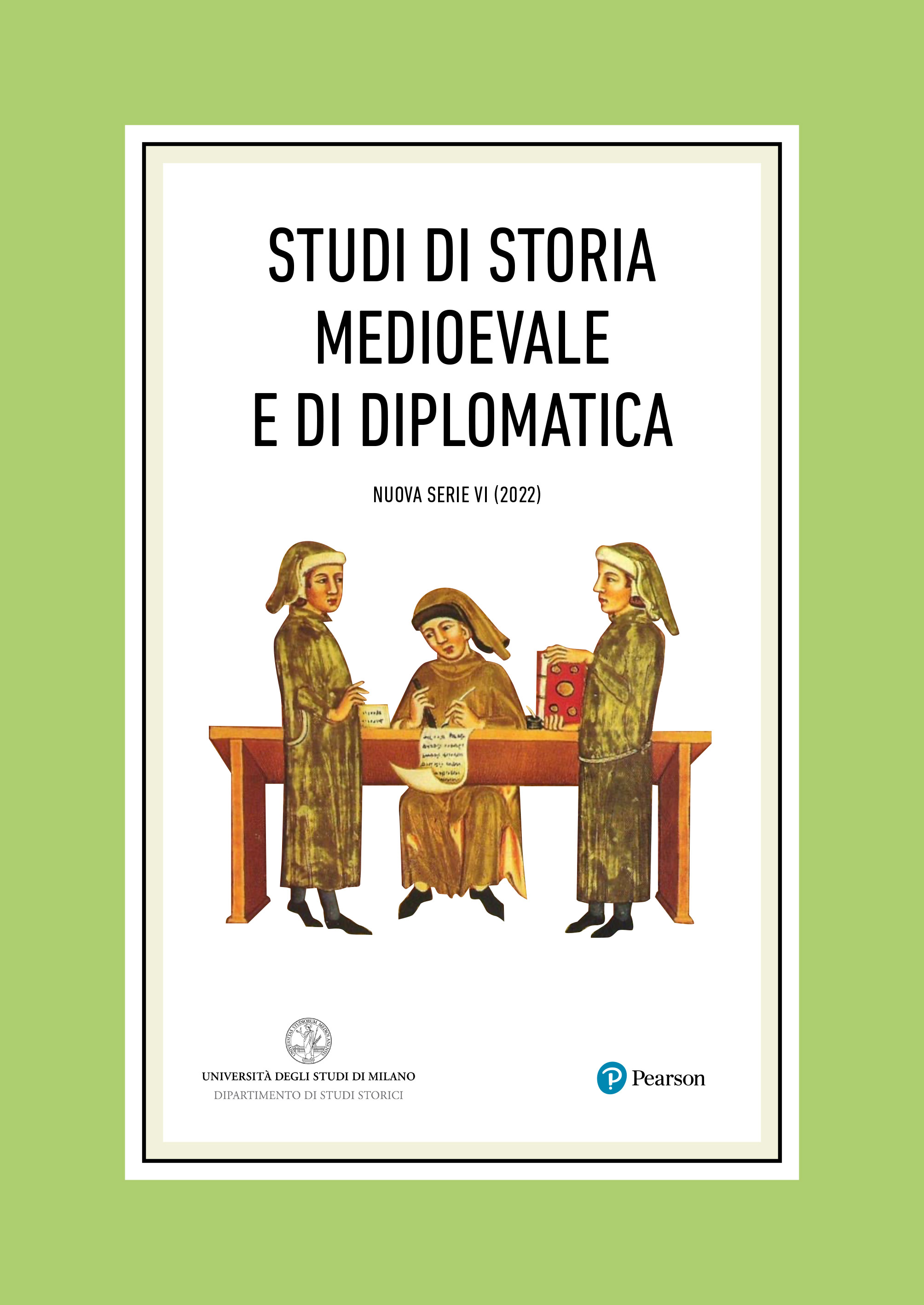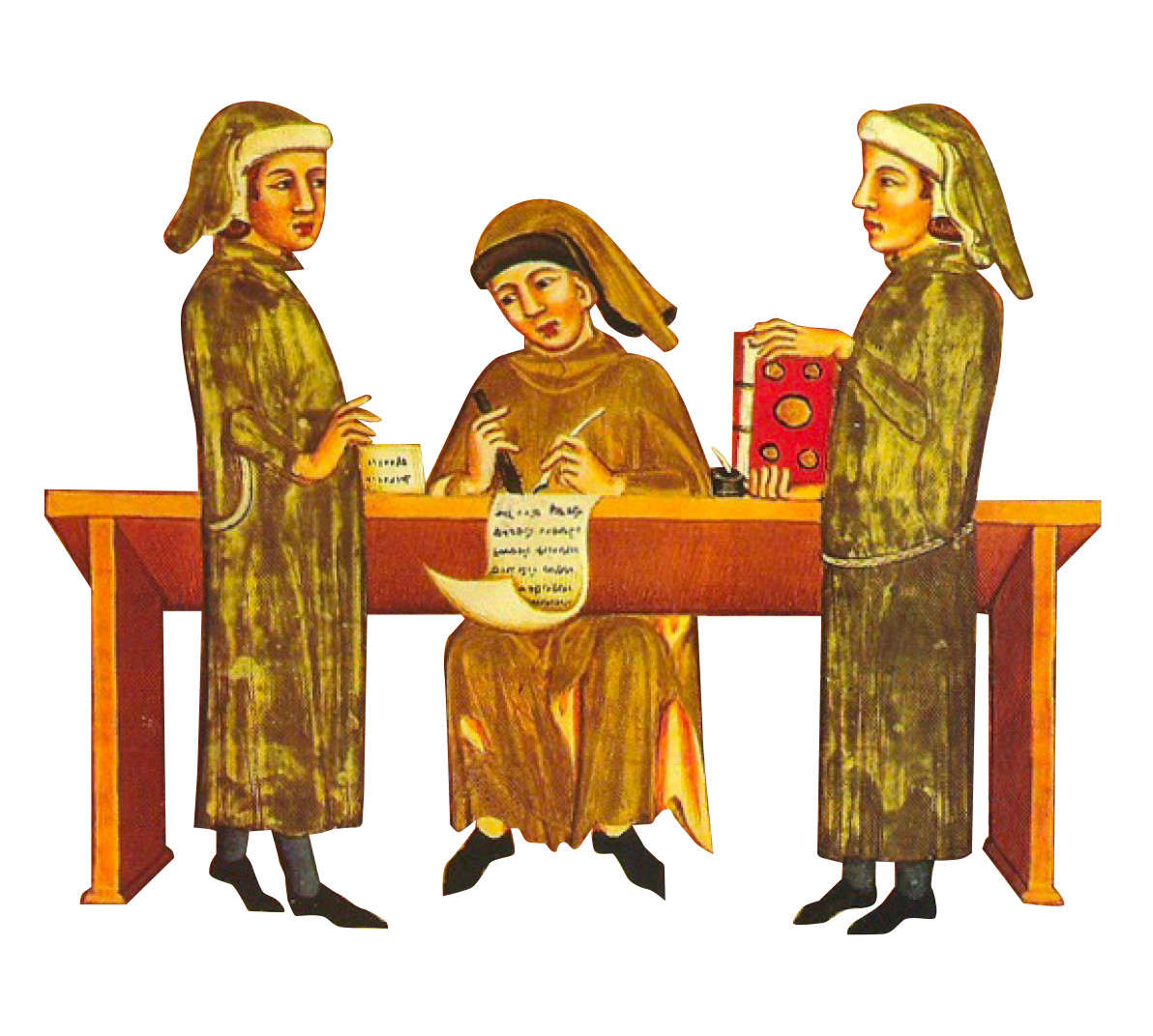Royal Estates and Public Prerogatives in Medieval Italy: An Interdisciplinary Approach
DOI:
https://doi.org/10.54103/2611-318X/18896Keywords:
Fiscal Estates, Middle Ages, Late Roman Empire, Economy, RiversAbstract
The article outlines the main contents and objectives of the PRIN research project Fiscal Estate in Medieval Italy: Continuity and Change (Ninth-Twelfth Centuries) and provides an overview of the three workshops organised in the first semester of 2022. The first workshop revolved around the transformations of the fiscal patrimony from the Roman empire to the post-Roman kingdoms in western Europe (Rome, February 2022); the second workshop dealt with the connections between the patterns of change in the exploitation of the royal domain, on the one hand, and medieval economic growth on the other (Bologna, May 2022); the third one discussed water rights and inland waterways in medieval Italy between the eighth and the thirteenth centuries, and involved both archaeologists and historians (Turin, May-June 2022).
Downloads
References
G. BIANCHI - R. HODGES, The nEU-Med Project: Vetricella, an Early Medieval Royal Property on Tuscany’s Mediterranean, Sesto Fiorentino 2020.
Biens publics, biens du roi. Les bases économiques des pouvoirs royaux dans le haut Moyen Âge (VIe-début du XIe siècle), sous la direction de F. BOUGARD et V. LORE, Turnhout 2019.
M. BLOCH, La société féodale, Paris 1939-1940.
S. CAROCCI, Signoria rurale e mutazione feudale. Una discussione, in «Storica», 8/III (1997), pp. 49-91.
S. CAROCCI - S.M. COLLAVINI, Il costo degli stati. Politica e prelievo nell’Occidente medievale (VI-XIV secolo), in «Storica», 52 (2010), pp. 7-48.
R. CIMINO, Angelberga: il monastero di San Sisto di Piacenza e il corso del fiume Po, in Il patrimonio delle regine [v.], pp. 141-162.
S. M. COLLAVINI, I beni fiscali in Tuscia tra X e XI secolo: forme di circolazione e ricadute sulle forme documentarie. Nuovi dati e nuove riflessioni a partire da tre documenti di S. Michele di Marturi, in corso di stampa.
S. M. COLLAVINI - P. TOMEI, Beni fiscali e ‘scritturazione’. Nuove proposte sui contesti di rilascio e falsificazione di D. OIII. 269 per il monastero di S. Ponziano di Lucca, in Originale - Fälschungen - Kopien, a cura di N. D’ACUNTO - W. HUSCHNER - S. ROEBERT, Leipzig 2017, pp. 205-216.
M. E. CORTESE, L’aristocrazia toscana. Sette secoli (VI-XII), Spoleto 2017.
A ‘Dark Matter’. History and Archaeology of Fiscal Estates in Medieval Italy (8th-11th c.), a cura di P. TOMEI - G. VIGNODELLI, Leiden, in corso di stampa.
Un emporio e la sua cattedrale: gli scavi di Piazza XX Settembre e Villaggio San Francesco a Comacchio, a cura di S. GELICHI - C. NEGRELLI - E. GRANDI, Sesto Fiorentino 2021.
S. ESDERS, The Staffelsee Inventory. Carolingian Manorial Economy, Mobility of peasants, and ‘Pockets of Functional Continuity’ in the Transition from Antiquity to the Middle Ages, in «The Journal of European Economic History», 49 (2020), pp. 206-250.
G. FASOLI, Le abbazie di Nonantola e di Pomposa, in La bonifica benedettina, a cura di A. FERRABINO, Roma 1963, pp. 97-105.
G. FASOLI, Navigazione fluviale. Porti e navi sul Po, in La navigazione mediterranea nell’alto medioevo, Spoleto 1978, pp. 565-607.
Fiscus. Fiscal Estate in Medieval Italy: Continuity and Change (9th - 12th centuries), all’url https://www.sismed.eu/it/progetti-di-ricerca/fiscal-estate/.
Food & S.T.O.N.E.S., all’url https://pric.unive.it/progetti/food-stones/home.
R. GRECI, Porti fluviali e ponti in età medievale. Il Po e l’area padana, in «Hortus Artium Medievalium», 22 (2016), pp. 238-248. DOI: https://doi.org/10.1484/J.HAM.5.111346
D. INTERNULLO, Du papyrus au parchemin. Les origines médiévales de la mémoire archivistique en Europe occidentale, in «Annales. Histoire, Sciences Sociales», LXXIV (2019), pp. 523-557. DOI: https://doi.org/10.1017/ahss.2020.52
T. LAZZARI, Bertha, amatissima. L’azione politica della figlia di Berengario I, badessa di S. Sisto e di S. Salvatore di Brescia, nel regno italico del secolo X, in I Longobardi a Venezia. Scritti per Stefano Gasparri, a cura di I. BARBIERA - F. BORRI - A. PAZIENZA, Turnhout 2020, pp. 195-203. DOI: https://doi.org/10.1484/M.HAMA-EB.5.118877
T. LAZZARI, La tutela del patrimonio fiscale: pratiche di salvaguardia del pubblico e autorità regia nel regno longobardo del secolo VIII, in «Reti Medievali Rivista», 18/1 (2017), pp. 99-121.
T. LAZZARI, Lombard ‘Austria’: Royal courts and monastic estates (8th - 10th centuries), in A ‘Dark Matter’ [v.].
M. MAIURO, Res Caesaris. Ricerche sulla proprietà imperiale nel Principato, Bari 2012.
E. MANARINI, Politiche regie e attivismo aristocratico nell’Emilia orientale. Il monastero di S. Silvestro di Nonantola, in «Annali dell’Istituto Italiano per gli Studi Storici», 30 (2017), pp. 7-74.
Il patrimonio delle regine: beni del fisco e politica regia fra IX e X secolo, a cura di T. LAZZARI, in «Reti Medievali Rivista», 13/2 (2012), pp. 123-298.
Patrimonium. Geography and Economy of the Imperial Properties in the Roman World, all’url https://patrimonium.huma-num.fr/.
P. RACINE, Poteri medievali e percorsi fluviali nell’Italia padana, in «Quaderni Storici», 21 (1986), pp. 8-32.
G. VIGNODELLI, Berta e Adelaide: la politica di consolidamento del potere regio di Ugo di Arles, in «Reti Medievali Rivista», 13/2 (2012), pp. 247-294, all’url http://www.serena.unina.it/index.php/rm/article/view/4794.
G. VIGNODELLI, New Research Approaches on the Fiscal Patrimony in the Italian Königslandschaft (Lombard Neustria), in A ‘Dark Matter’ [v.].
C. WICKHAM, Framing the Early Middle Ages. Europe and the Mediterranean, 400-800, Oxford 2005. DOI: https://doi.org/10.1093/acprof:oso/9780199264490.001.0001
Downloads
Published
How to Cite
Issue
Section
License

This work is licensed under a Creative Commons Attribution-ShareAlike 4.0 International License.




